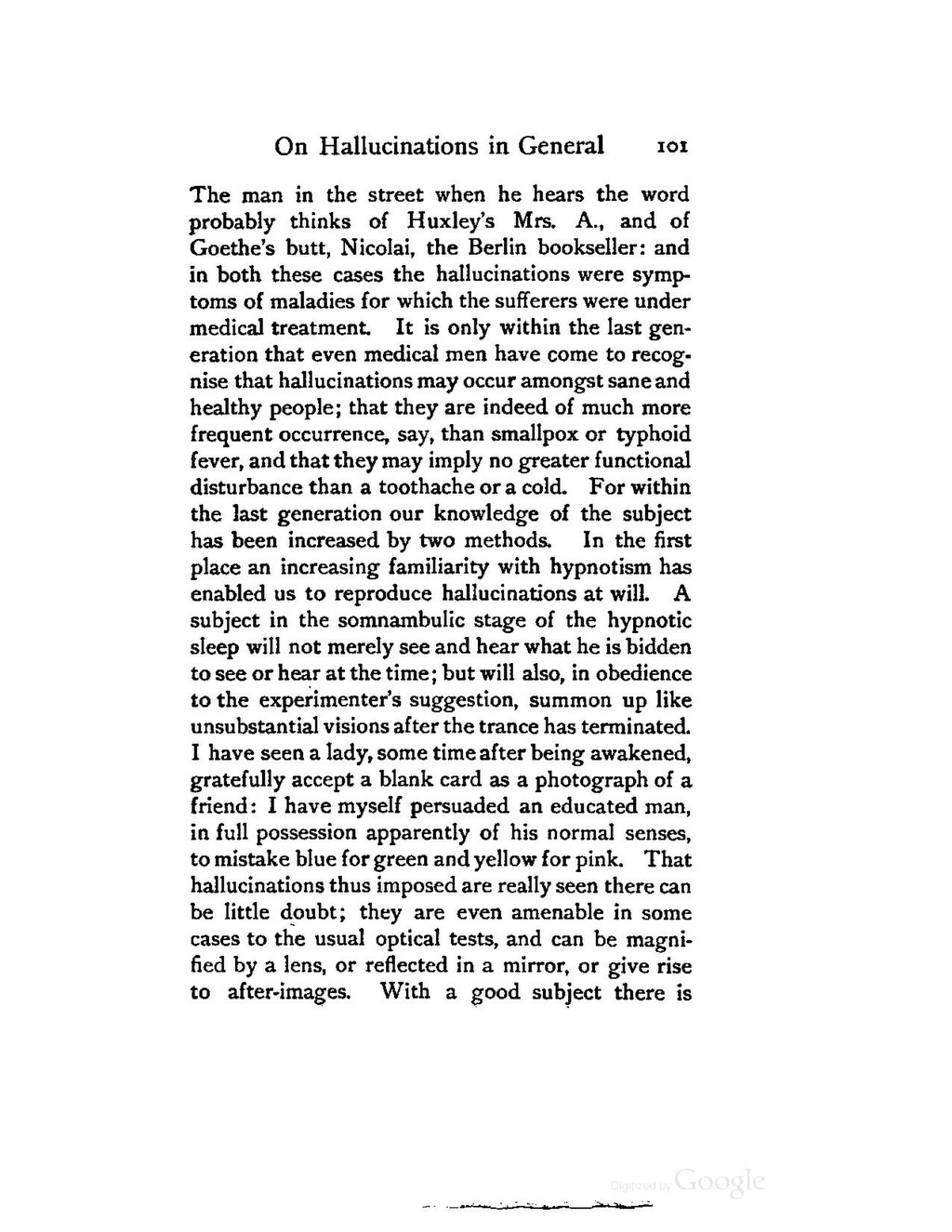The man in the street when he hears the word probably thinks of Huxley's Mrs. A., and of Goethe's butt, Nicolai, the Berlin bookseller: and in both these cases the hallucinations were symptoms of maladies for which the sufferers were under medical treatment. It is only within the last generation that even medical men have come to recognise that hallucinations may occur amongst sane and healthy people; that they are indeed of much more frequent occurrence, say, than smallpox or typhoid fever, and that they may imply no greater functional disturbance than a toothache or a cold. For within the last generation our knowledge of the subject has been increased by two methods. In the first place an increasing familiarity with hypnotism has enabled us to reproduce hallucinations at will. A subject in the somnambulic stage of the hypnotic sleep will not merely see and hear what he is hidden to see or hear at the time; but will also, in obedience to the experimenter's suggestion, summon up like unsubstantial visions after the trance has terminated. I have seen a lady, some time after being awakened, gratefully accept a blank card as a photograph of a friend: I have myself persuaded an educated man, in full possession apparently of his normal senses, to mistake blue for green and yellow for pink. That hallucinations thus imposed are really seen there can be little doubt; they are even amenable in some cases to the usual optical tests, and can be magnified by a lens, or reflected in a mirror, or give rise to after-images. With a good subject there is
